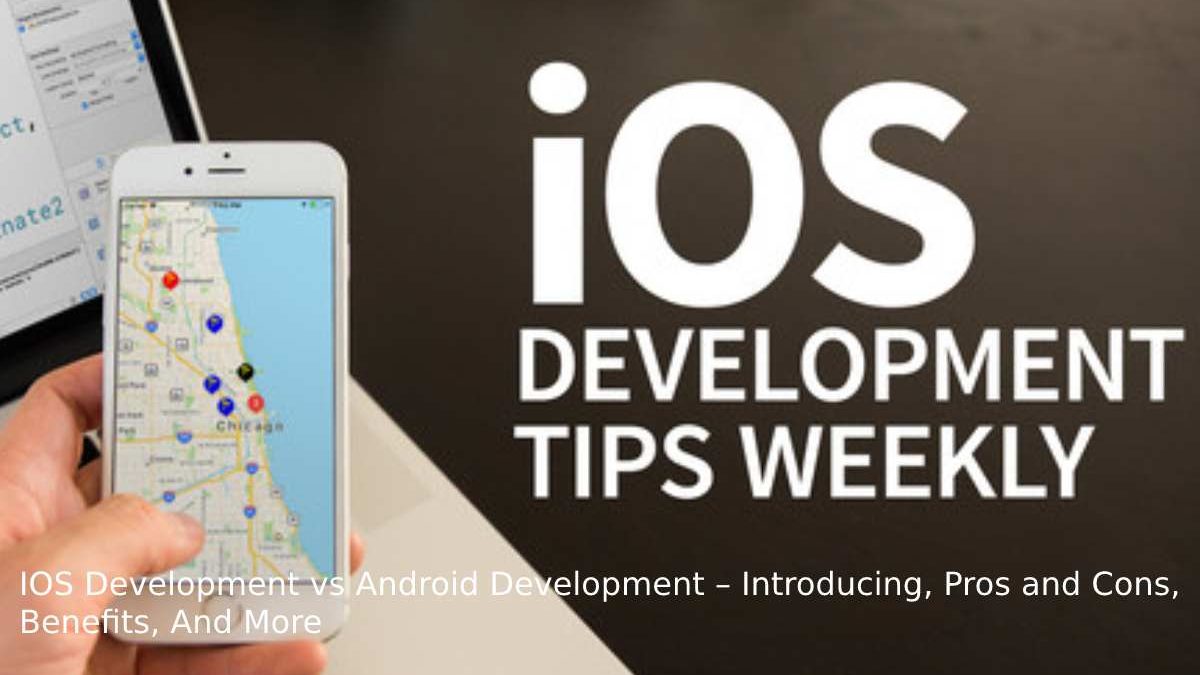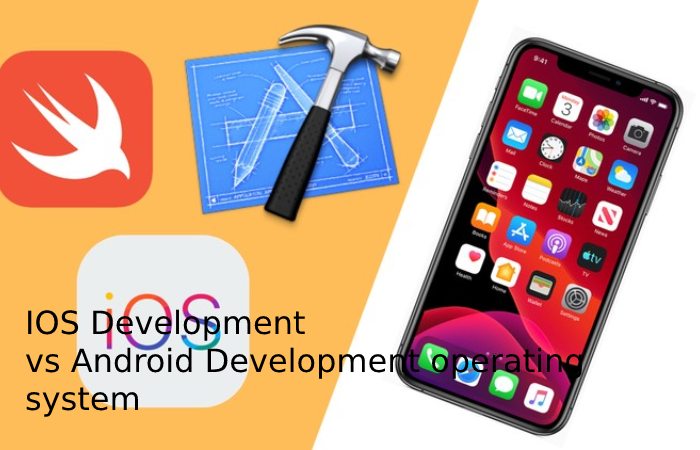Table of Contents
IOS Development vs Android Development – Introducing

IOS Development vs Android Development operating system is an application that works as an interface between the hardware and the software. Like a desktop request/software, a mobile app also needs a platform to function. Machine and iOS are two of the significant mobile effective systems. Here we are discussing Android Vs iOS development.
A mobile app’s ability to generate profit is contingent on several things, including the platform on which it creates. If you think that Android has a more significant market share and generates more considerable income, you should think again. Although the number of Android apps and users is higher, the Apple App Store generates much more revenue than its participant. In 2016, Google Play made $3.3B in income while App Store created a payment of $5.4B, which is moderately massive. The main reason is the advanced cost of publication on the App Store.
Future Prospects of IOS Development
IOS devices are getting cheaper and faster due to their high performance and constant innovation. Android devices are now farming 74.4% of the global market, making Android app growth extremely hopeful. Overall, it’s not creative to base your iOS vs Android app growth choices on the future outlook since both platforms will not lose popularity within the next few years.
IOS Development Android Development Pros and Cons
While Android is the absolute leader in market share, users who prefer iOS have a higher lifetime value (LTV). These clients are more prone to spending money inside the app to buy additionally satisfied and become a long-standing—slightly than a one-time—source of income. While there is no clear victor in the Android vs iOS growth income competition, experts expect that the overall in-app user spending will spread $60 billion for the iOS App Store in the following year. If you’re planning to create a trading app or an app that suggests additional general content that a user can buy, iOS will grant you more chances to profit.
iOS vs Android Development Comparison
In the Android versus iOS evaluation, Android is currently a more reachable platform. While the evaluation process in 2020 takes longer than it did a few years ago, Google Play still accepts most succumbed apps. If you uphold all of the concern’s policy guidelines, the supply will likely display your application eventually. The Apple App Store is more careful about the apps it allows. The review procedure is currently somewhat faster, with just two days for most apps, but getting rejected is higher with Apple. Also, with Google, creators only need to pay the yearly fee of $25 to start tapping their apps on the store, unlike the annual $99 fee with Apple’s App Store.
The Benefits of Developing for Android
Flexibility. Generally, Android presents a much less limited setting than iOS. In terms of supply, these apps will run on almost any Android device, and you are improbable to encounter any issues with hardware compatibility. The development procedure is also more flexible for Android. This stage also enables a smoother growth experience by relying on Java. Java is a highly versatile programming language that Windows, Mac OS, and Linux support, allowing developers to build Android apps. Learning resources. Google offers a broad knowledge base for beginners, exercises, cooperating materials, and whole training programs for different levels of Android developers.
As of 2020, Google has become less humane towards app developers who want to post on Google Play. They are publishing the app. The evaluation process that used to be done automatically within seven hours now may take up to a week for new developers. Developers also have to pay a reasonably low one-time registration fee of $25. Despite this novelty, however, most Android apps that don’t violate the company’s content policy get approved.
Developing Android apps means building software for a whole system of devices. It is going beyond smartphones. You can range your app’s functionality to run on Daydream and Cardboard VR headsets, Wear OS devices, Android Auto, and several other platforms. While this elasticity can create design issues, it also integrates your app into users’ cars, TVs, smartwatches, and phones.
The Drawbacks of Android Development
Quality assurance. Developing for Android usually is more time-consuming than for iOS. The fragmentation can be highly beneficial, allowing you to develop for multiple Android platforms simultaneously, but it makes testing extremely complicated. Even in the simplest apps, developers frequently have to deliver fixes because most users stick to the older versions of the operating system instead of updating it when updates are available. Cost. The prices increase respectively, both in development and subsequent quality assurance. Users spend less inside the app. Android users tend to favor free apps, and they also pay less on in-app purchases than iOS users do. Possible security issues. Android is an open-source platform, and it has a higher chance of falling victim to cyberattacks than the much more closed-off iOS counterpart.
iOS vs Android App Growth: What’s the difference?
The most general smartphone operating systems are Apple’s iOS and Google’s Android. When creating mobile apps, you must first choose whether to develop them for iPhones or Android devices.
Instant is a current software design language designed exactly for Apple products. You need to know Swift to grow for iOS. The code is relatively frank and easy to read for beginner computer operators. However, Swift is unique to Apple Harvests and is generally not commonly used outside iOS app development. If you want to target Apple creation users, learn iOS development; if you target different consumer bases, then consider learning Android.
Android products rely on Java and Kotlin. While Kotlin confines itself mainly to just Android app development, Java is a popular programming language that has been around since 1995. The Java software design language has many use cases outside of Android products. If you are a programmer interested in mobile app development but want to keep your options open, then learning Android app development is helpful for you.
Apps made for the Apple App Supply differ in numerous ways from Apps Made for the Google Play Store:
- Developers use different programming languages when evolving for iOS versus growing for Android.
- iOS apps and Android apps need different budgets and maintenance tasks.
- Different mobile operating systems are generally conditional on the republic one wants to target.
- Android is more customizable than iOS but not automatically more prevalent in every country.
- Making cross-platform apps is a task. Trying to issue an app for both iOS and Android simultaneously leads to technical issues, expensive costs, and many more challenges. So, it is essential to select.
- Before choosing, you might wonder:
- Is iOS easier to develop than Android?
- What is the chief difference between iOS and Android?
- Is one platform better than the other?
- Do iOS or Android apps earn more revenue?
Conclusion
So which one must I choose, iOS or Android development? Well, there is no plain winner in Android vs. iOS. It’s essential to put personal preferences aside and look at the big picture. Users not updating to the latest Android types forces you to spend extra time and money on destruction. If you want to customize more, wait for less to get your app approved, and reach a wider audience, the Android platform is the way to go.


